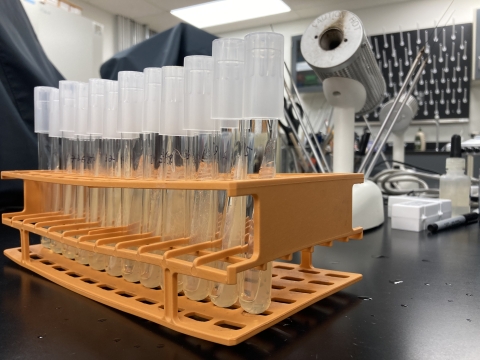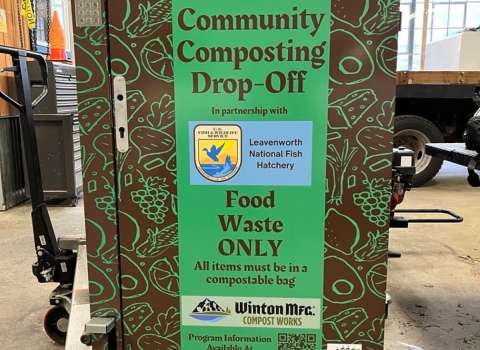Mystery creates Collaboration
What engages and intrigues a scientist's brain? The answer is Mystery. Science thrives in the unknown. It often spurs us to be innovative and collaborative. At the Midwest Fisheries Center, collaboration is just down the hall. Last month staff at the Iron River National Fish Hatchery (NFH) noticed some broodstock broodstock
The reproductively mature adults in a population that breed (or spawn) and produce more individuals (offspring or progeny).
Learn more about broodstock coaster brook trout exhibiting clinical signs of abnormal swimming, inconsistent egg quality, kidney pseudomembrane, fluid in the swim bladder, and bloody ascites fluid. It isn’t the first time these clinical signs have been seen at the hatchery. Back in 2018, hatchery staff called the La Crosse Fish Health Center to investigate what was going on with fish exhibiting the same clinical signs. After isolating and sequencing the bacteria, staff were able to identify the bacteria as Vagococcus salmoninarum (Vsal). Vsal is an uncommon bacterium, and the origin is not known. In addition to Vsal, staff isolated the bacterium, Carnobacterium maltaromaticum (Cmalt). Cmalt is very common in the environment, foods, normal gut flora and the causative agent of pseudokidney disease .
Solutions for unanswered questions
Due to the history of these bacteria, staff had an idea of what may be going on at Iron River NFH this August. Lab results showed that Cmalt was present, and the fish had clinical signs of pseudokidney disease. However, unanswered questions still remain. Why is such a common bacterium unusually aggressive at this hatchery and where did it come from? The Fish Health Center is collaborating with the Whitney Genetics Lab right down the hall from them to find out.
The Whitney Genetics Lab is working on mapping the genome of Cmalt and Vsal found at Iron River to identify why they’re so damaging; identifying genes related to virulence and antibiotic resistance, as well as potentially identifying their origin. The fish at Iron River NFH have been treated and mortalities have decreased. Thanks to collaboration at the Midwest Fisheries Center, this mystery continues to be unraveled as two offices come together to overcome this challenge in the conservation of the coaster brook trout.




